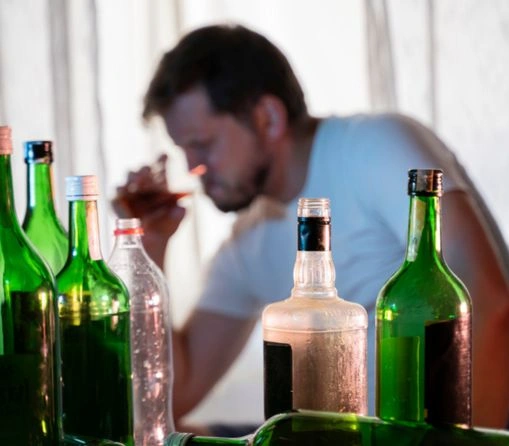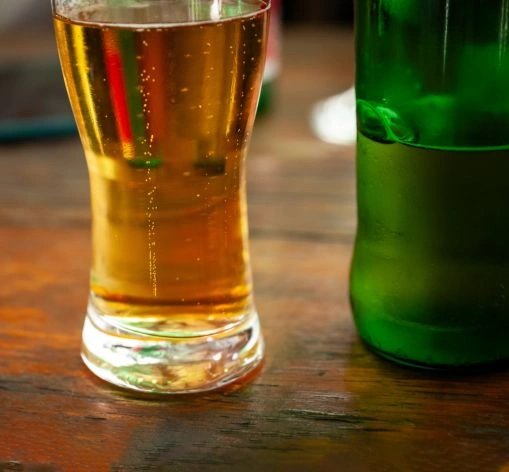What is High Intensity Drinking?
Everything You Need to Know About High Intensity Drinking
Table of Contents
Maybe you have an inkling that your drinking is reaching problematic proportions in your daily life. When it comes to how much you drink, you may lose control fairly quickly if you aren’t mindful of serving sizes and your level of intoxication. What is high-intensity drinking and how does it differ from other problems?
High-intensity drinking means that you double the standards for binge drinking (eight drinks or more for women or ten drinks or more for men). It could also mean fifteen or more drinks per week. When you’re drinking at this level, the side effects are increased: blackouts, memory issues, and risky decisions.
Changes Healing Center helps treat high-intensity drinking so that you can live without feeling like you have to drink to get through each day. Our enrollment team can help you secure a place in the right program. If you aren’t ready to seek help yet, here’s what to know about high-intensity drinking.
How Does High Intensity Drinking Relate to Binge Drinking?
Binge drinking has long been an issue on college campuses and beyond, causing significant issues with increased alcohol consumption. It’s just one hallmark of alcohol abuse that can slowly lead down a path toward alcoholism. It’s dangerous and often reckless, a sign that you might lose control.
High-intensity drinking takes it to a new level, with more dangers and problems than you can imagine.
But what is high intensity drinking compared to the more established binge drinking?
Eight or More Drinks in One Sitting
The threshold for an instance of binge drinking is quite high: five or more drinks for men and four or more drinks for women. At this level, you’re likely already intoxicated and run the risk of dangerous outcomes when it comes to your blood alcohol concentration.
High-intensity drinking goes beyond this threshold to ten or more drinks for men and eight or more drinks for women. You may also consume more than fifteen drinks per week. It’s important to note that this level of drinking doesn’t necessarily mean that you drink excessively over a certain time period, like an hour.
It’s defined by sitting, which can stretch for multiple hours or even days. According to the Centers for Disease Control, this level of drinking can span an entire week. If you’re consuming ten or more drinks, you fall into the category of high-intensity drinking.
Must Measure by Standard Drink Sizes
Do you know what a standard drink actually is? Many college freshmen and other young adults might be mixing drinks that are stronger than they should be. This means they could drink more than they think, easily crossing the line into high-intensity drinking.
If you think that you might be drinking too much, consider measuring your alcohol intake when you mix a drink. Here are standard drink volumes:
- 12 ounces of beer (5% ABV)
- 8 ounces of malt liquor (7% ABV)
- 5 ounces of wine (12% ABV)
- 5 ounces of spirits (40% ABV or 80 proof)
Monitor your alcohol intake by measuring out each serving if you think that you might be developing alcohol use disorder or engaging in high-intensity drinking with its litany of health consequences.
Consequences of Excessive Alcohol Consumption
Binge drinking is already seen as a dangerous practice compared to more moderate alcohol intake. But what happens to your body, brain, and ability to function when you double the amount you drink? Some serious consequences need to be dealt with, starting with these.
More Serious Intoxication (Blackouts, Risky Behaviors, Decision Making, and More)
Alcohol abuse and alcoholism have some scary side effects that can impact more than just yourself. If you pass the binge threshold and double it to reach high-intensity drinking, then you might suffer from more symptoms related to intoxication–and more serious ones at that.
At this level of substance abuse, you’re going to do more than slur your speech. You are at a greater risk of blackouts, which can keep you from remembering what happened to you. Not knowing what is going on around you can lead to dangerous and precarious situations.
You’ll also be far more likely to engage in risky behaviors like unprotected sex or reckless drunk driving. Your ability to make good decisions suffers severe impairment when you’re drinking alcohol at such a high intensity.
Long-Term Consequences of High Intensity Drinking

The negative alcohol-related consequences don’t end in the immediate future. You put yourself at risk for severe health consequences years and decades down the road if you sustain this level of drinking. What could possibly happen to you with continued alcohol misuse?
According to the Centers for Disease Control (CDC), young adults who give into excessive alcohol use are prone to these consequences down the road:
- Memory issues (short-term and long-term)
- Problems with the heart or liver
- Poor immune system
- Development of certain kinds of cancer
- Anxiety, depression, and other mood issues
High-intensity drinkers need to think about whether it’s ultimately worth it to face these consequences as they age. Many people who start to drink are underage young adults, which means they could see a significantly shorter lifespan and poorer quality of life with repeated heavy drinking.
Who’s at Risk for High Intensity Drinking?
Unfortunately, the demographic for who is at the most risk of alcohol consumption verging on heavy drinking tends to be among young adults. In the category of underage drinkers (ages 12 to 20), the Substance Abuse and Mental Health Services Administration states that 2.5 percent are involved in heavy drinking.
However, that number increases substantially among young adults who have reached legal age.
Among people who are over the age of 21, 6.6 percent of them are heavy drinkers. That represents approximately 15.7 million people who may see these side effects and consequences one day.
This should be viewed as a modern-day health crisis, with everyone taking steps to see high-intensity drinking decrease. College freshmen drink heavily due to their new freedom from parents and rules, but there is more help needed on campuses to deal with alcohol abuse.
Getting Help for High Intensity Drinking

Whether you know high school students or college students who land in this category, you should be able to spot the warning signs that binge drinkers and heavy drinkers need to seek professional help for alcohol consumption.
Here are some of the questions you might ask to determine what level of help is needed:
- Do you feel like you need to have a drink to engage with your day-to-day variations in mood or responsibilities?
- Do you often get in trouble because of your drinking?
- Are the potential negative consequences outweighing the gains of what drinking offers?
- Have you had other people warn you that your drinking is excessive or problematic?
- Is it hard to stop drinking, even if you notice the negative ways it impacts you?
Both young people and older adults can ask themselves these questions to determine if they need to find a program that helps with high intensity drinking.
Start with a Medical Detox at Changes Healing Center
If you’re at higher risk of alcohol abuse and alcoholism, you might need to seek treatment at a higher level. According to the National Institute of Health and Human Services, alcohol withdrawal symptoms can be severe and uncomfortable. They include hallucinations, seizures, and delirium tremens in addition to more moderate symptoms.
Heavy drinkers might have spent many years building up to drinking at this level. It can take time to get alcohol out of your system safely.
Changes Healing Center offers a sub-acute detox center where you can rest easy and know that you’re safe and in the care of physicians and medical professionals. We can make you more comfortable as you detox with the help of counselors and medication-assisted treatment.
Especially if you have any drug use combined with alcohol consumption, you might need more help than outpatient allows.
Move to Residential Treatment When Ready
Changes Healing Center also offers help in an inpatient treatment center. You’ll be among clients who also struggle with alcohol use disorder, drug use, and mental health issues. This is a good way for you to connect with peers, learn from each other, and grow.
During a stay at our residential treatment programs, it will be easier for you to build up some time spent living sober. You won’t have the option to drink, even during social events. It’s a great way for you to reset your habits so that you can transition back to your life with new coping skills and options besides drinking.
While you’re with us, you can take advantage of individual and group therapy, family therapy, and peer support groups. Many clients also take advantage of complementary therapies like yoga, art, and music.
Outpatient to Help Transition to Daily Life

The hardest transition you’ll be asked to make is the one back to the setting where you were consuming alcohol. You’ll have more than one occasion to practice your newfound coping skills, earned through the hours of therapy you attended in residential treatment. Outpatient puts you back in your daily life with a strong support system.
You’ll spend all day in our treatment center, attending therapy and meeting with your medical team.
However, your nights will be spent with your family and friends. Chances are that you’ll be exposed to people who are drinking and will have to decide whether you can be around it without relapse. This is a challenge, which is why we offer ongoing support and aftercare at Changes Healing Center.
Get Help for High Intensity Drinking at Changes Healing Center
Maybe you suspected that your drinking was problematic but weren’t sure exactly how much it would impact your day-to-day life. If this article resonated with you and made you think that consuming the volume of alcohol you’re currently drinking needs to stop, Changes Healing Center is here to help.
Our enrollment team can answer your questions and verify your health insurance benefits in a quick and confidential phone call today. All it takes is fifteen minutes to learn more and start thinking about turning your life around without alcohol dependence!
References
- Centers for Disease Control and Prevention. (n.d.-b). Facts about excessive drinking. Centers for Disease Control and Prevention.
- Centers for Disease Control and Prevention. (n.d.-a). About standard drink sizes. Centers for Disease Control and Prevention.
- Centers for Disease Control and Prevention. (n.d.-b). Facts about excessive drinking. Centers for Disease Control and Prevention.
- Substance Abuse and Mental Health Services Administration. (n.d.). Alcohol Use Facts and Resources.
- Sachdeva, A., Choudhary, M., & Chandra, M. (2015). Alcohol Withdrawal Syndrome: Benzodiazepines and Beyond. Journal of clinical and diagnostic research : JCDR, 9(9), VE01–VE07.

